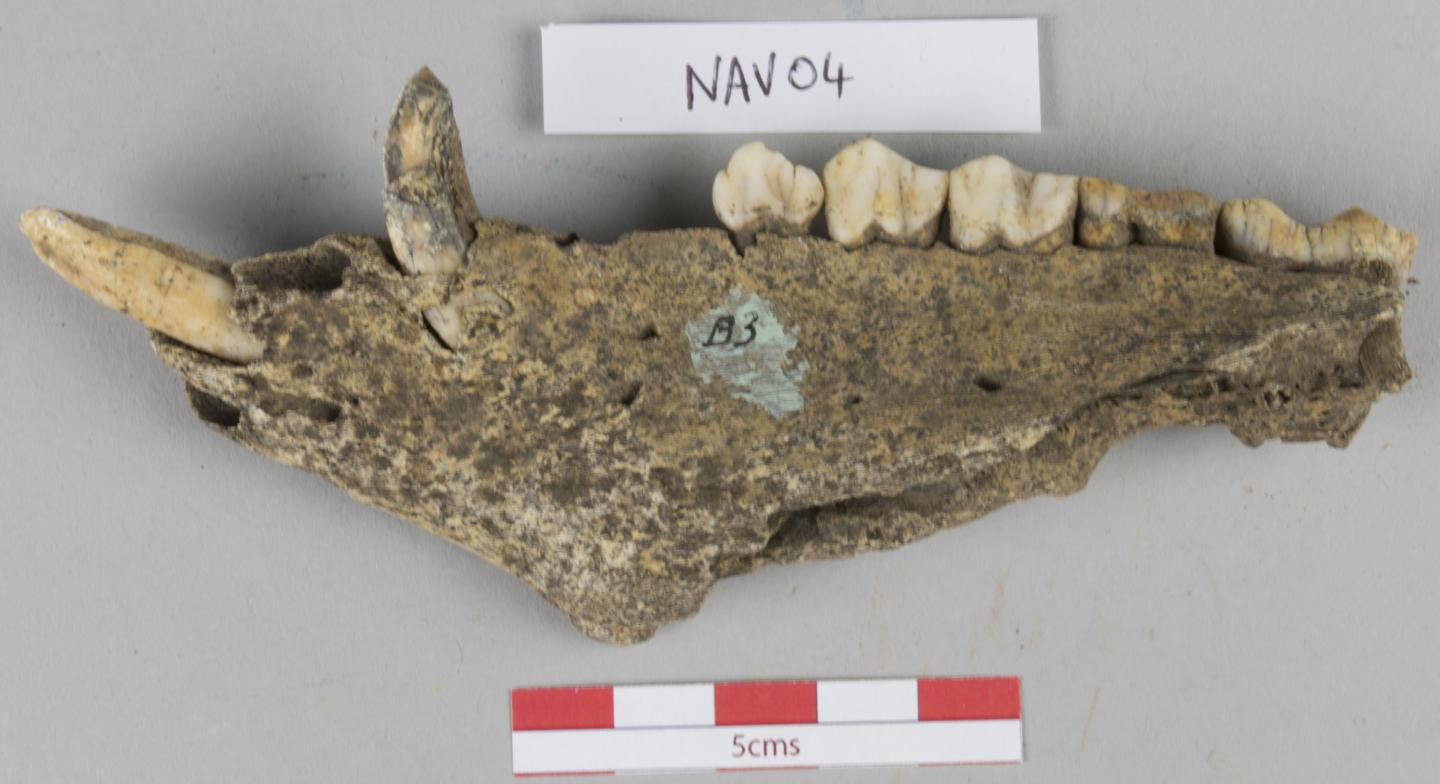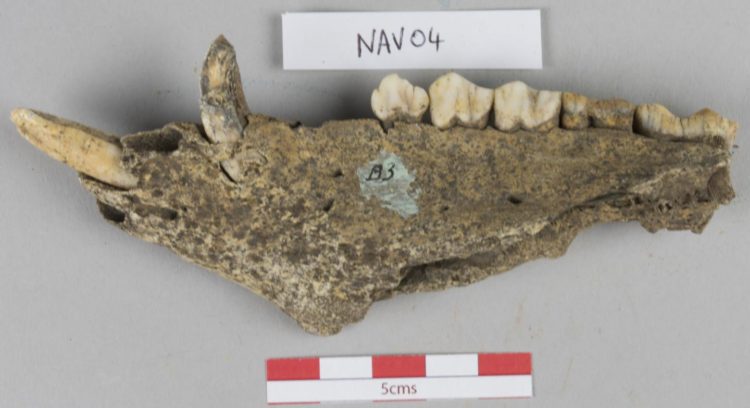Study explores scale of human mobility through analysis of animal bones

Credit: Dr Richard Madgwick
People transported animals over huge distances for mass gatherings at one of Ireland’s most iconic archaeological sites, research concludes.
Dr Richard Madgwick of Cardiff University led the study, which analysed the bones of 35 animals excavated from Navan Fort, the legendary capital of Ulster. Researchers from Queen’s University Belfast, Memorial University Newfoundland and the British Geological Survey were also involved in the research.
The site had long been considered a centre for ritual gatherings, as excavations found a huge 40m diameter building and a barbary ape cranium, likely from at least as far as Iberia. Results suggest the pigs, cattle and sheep were brought from across Ireland, perhaps being reared as far afield as Galway, Donegal, Down, Tyrone and Antrim. Evidence suggests some were brought over more than 100 miles.
Dr Madgwick, based in Cardiff University’s School of History, Archaeology and Religion, said: “Our results provide clear evidence that communities in Iron Age Ireland were very mobile and that livestock were also moved over greater distances than was previously thought.
“The high proportion of pig remains found there is very rare for this period. This suggests that Navan Fort was a feasting centre, as pigs are well-suited as feasting animals and in early Irish literature pork is the preferred food of the feast.
“It is clear that Navan Fort had a vast catchment and that the influence of the site was far-reaching.”
Researchers used multi-isotope analysis on samples of tooth enamel to unlock the origins of each animal. Food and water have chemical compositions linked to the geographical areas where they are sourced. When animals eat and drink, these chemical signals are archived in their teeth, allowing scientists to investigate the location where they were raised.
Co-author of the research, Dr Finbar McCormick, of Queen’s University, Belfast, said: “In the absence of human remains, multi-isotope analysis of animals found at Navan Fort provides us with the best indication of human movement at that time.
“Feasting, almost invariably associated with sacrifice, was a social necessity of early societies where the slaughter of a large domesticate necessitated the consumption of a large amount of meat in a short period of time.”
Earlier this year, Dr Madgwick’s research of 131 pigs found at sites near Stonehenge revealed animals came from as far away as Scotland and numerous other locations across the British Isles. Before this, the origins of people who visited this area and the extent of the population’s movements at the time had been long-standing enigmas in British prehistory.
Dr Madgwick added: “Transporting animals across the country would have involved a great deal of time and effort so our findings demonstrate the important role they played in society. Food was clearly a central part of people’s exchanges and traditions.”
###
The full paper will be available here: http://www.
Media Contact
Dr Richard Madgwick
[email protected]
07-754-058-841
Related Journal Article
http://dx.





